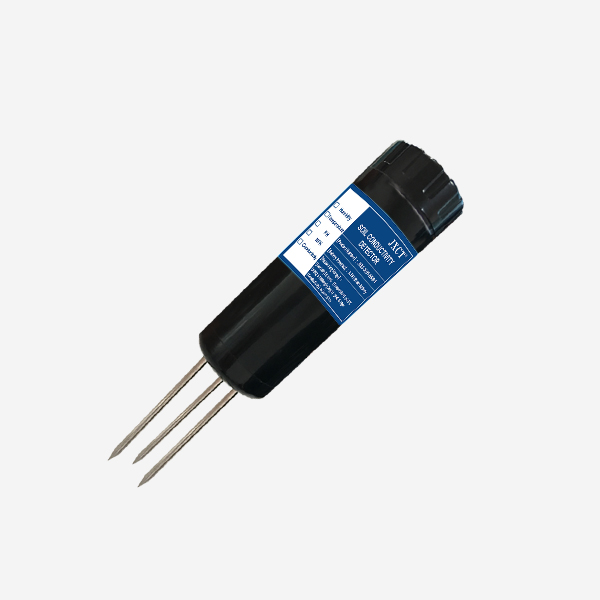Soil sensors are valuable tools used in agriculture, environmental monitoring, and research to gather crucial data about soil conditions. These sensors provide information on parameters such as moisture levels, temperature, nutrient content, salinity, and pH. However, there are various types of soil sensors available, each with its own working principles, measurement capabilities, and applications. In this article, we will explore the key differences in soil sensors and their implications for different fields.

Soil Moisture Sensors:
Soil moisture sensors measure the water content in the soil, which is a critical parameter for plant growth and irrigation management. There are several types of soil moisture sensors, including:
a) Tensiometers:
Tensiometers rely on the principle of water potential to measure soil moisture. They consist of a ceramic cup filled with water connected to a pressure gauge. As the soil dries, water is drawn out of the cup, causing negative pressure that is measured by the gauge. Tensiometers are accurate in the wetter range of soil moisture but less so in dry conditions.
b) Capacitance Sensors:
Capacitance sensors measure soil moisture by detecting changes in electrical capacitance caused by the presence of water. These sensors have electrodes that emit an electrical signal into the soil, and the amount of water in the soil affects the capacitive properties. Capacitance sensors are versatile and can measure moisture across a wide range of soil types.
c) Time Domain Reflectometry (TDR) Sensors:
TDR sensors measure soil moisture by analyzing the time taken for an electromagnetic pulse to travel through the soil. The speed of the pulse is affected by the soil moisture content. TDR sensors are highly accurate and can provide measurements at different depths in the soil profile.
Soil Temperature Sensors:
Soil temperature sensors are used to monitor the temperature of the soil, which influences plant growth, microbial activity, and nutrient availability. Some common types of soil temperature sensors include:
a) Thermocouples:
Thermocouples consist of two different metals joined together, which generate an electric voltage proportional to the temperature difference. They are widely used and provide accurate measurements over a broad temperature range.
b) Resistance Temperature Detectors (RTDs):
RTDs use the principle of electrical resistance to measure temperature. They consist of a metallic element with a known resistance that changes with temperature. RTDs offer high accuracy and stability but are more expensive than thermocouples.
c) Thermistors:
Thermistors are temperature-sensitive resistors made of ceramic materials. Their resistance changes significantly with temperature, allowing accurate temperature measurement. Thermistors are cost-effective and have fast response times.
Soil Nutrient Sensors:
Soil nutrient sensors are used to measure the concentration of essential nutrients in the soil, such as nitrogen, phosphorus, and potassium. Some commonly used soil nutrient sensors include:
a) Ion-Selective Electrodes (ISEs):
SEs are selective to specific ions and measure their concentration through electrical potential. They can be used to measure various nutrient ions in the soil, providing valuable information for fertilizer management.
b) Optical Sensors:
Optical sensors use light absorption or reflection properties to measure nutrient concentrations. They often employ the principles of spectroscopy or colorimetry to determine nutrient levels. Optical sensors are non-destructive, rapid, and can measure multiple nutrients simultaneously.
Soil pH Sensors:
Soil pH sensors measure the acidity or alkalinity of the soil, which is crucial for nutrient availability and microbial activity. pH sensors can be categorized into:
a) Glass Electrodes:
Glass electrodes are immersed in a solution and measure the electrical potential generated by the hydrogen ions in the soil. They provide accurate pH measurements but require regular calibration and maintenance.

b) Field-Effect Transistors (FETs):
FET-based pH sensors use a sensitive transistor that responds to changes in hydrogen ion concentration. They are compact, low-cost, and suitable for field applications.
Conclusion:
Soil sensors play a vital role in agriculture, environmental monitoring, and research by providing critical information about soil conditions. Understanding the differences in soil sensors, including their working principles, measurement capabilities, and applications, is essential for selecting the most suitable sensor for specific needs. Whether it’s monitoring soil moisture, temperature, nutrient content, or pH, the wide range of soil sensors available allows for precise data collection, enabling informed decision-making for optimal crop growth, resource management, and environmental conservation.
